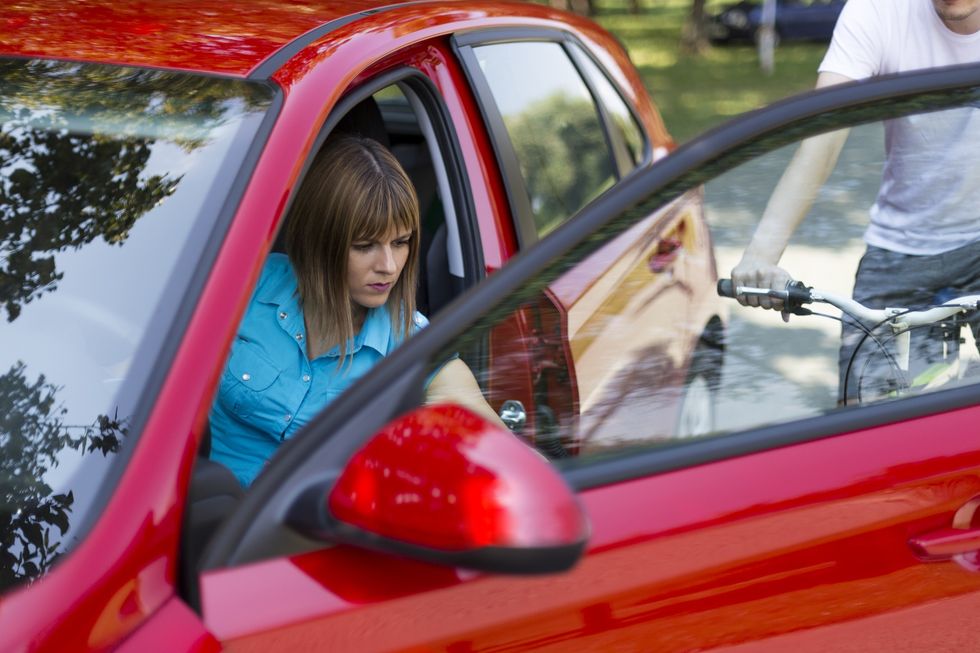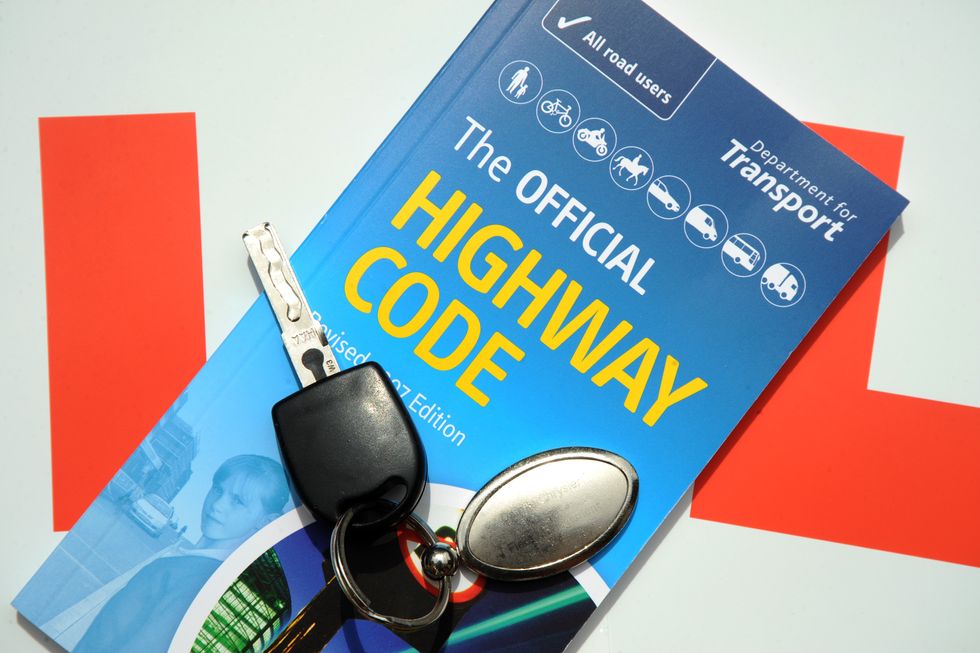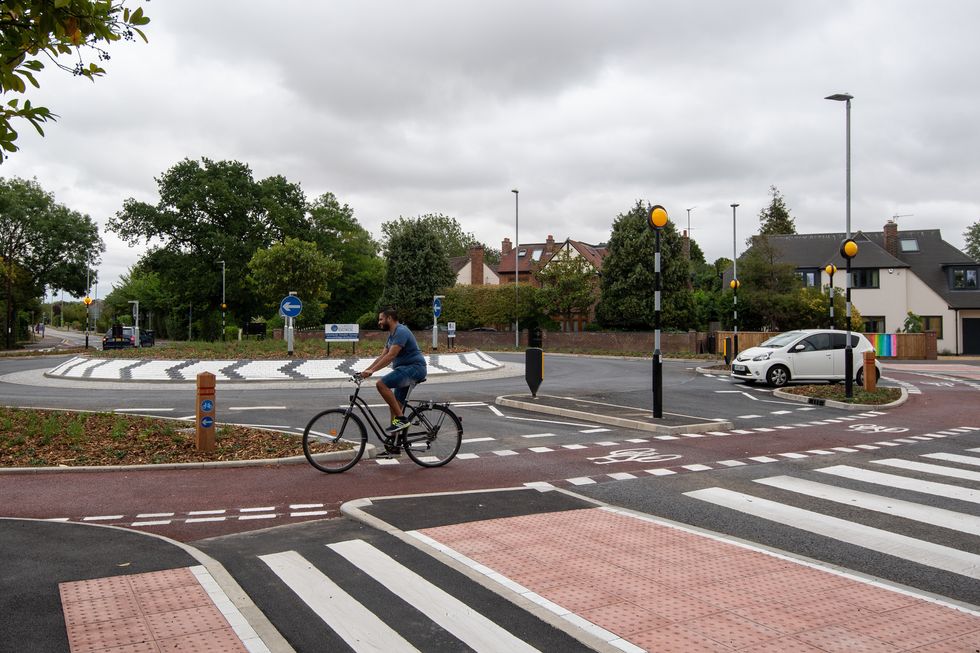Drivers risk £1,000 fine for breaking 'simple' Highway Code rule putting pedestrians and cyclists in danger

Rule 239 of the Highway Code requires drivers not to open doors along the cycle lane
Don't Miss
Most Read
Motorists have been warned they face fines of up to £1,000 for breaking a major Highway Code rule which could endanger pedestrians and cyclists.
The penalty applies to drivers and passengers who fail to check for passing traffic before exiting their vehicles, potentially causing serious accidents through 'dooring' incidents.
Experts have now issued a reminder about the legal requirement to use proper safety techniques when opening car doors, as outlined in the Highway Code.
The warning comes as statistics reveal the scale of accidents caused by vehicle doors, with hundreds of incidents recorded annually.
Do you have a story you'd like to share? Get in touch by emailing motoring@gbnews.uk

Drivers can be fined £1,000 for 'dooring' offences on UK roads
|GETTY
John Wilmot, CEO of the car leasing comparison site, stressed that the safety measure "isn't just a suggestion" but a crucial requirement to prevent serious harm to vulnerable road users.
Rule 239 of the Highway Code requires drivers and passengers to use the Dutch Reach method when opening car doors, whenever possible.
This technique requires using the hand furthest from the door to open it - for instance, a driver should use their left hand to open a door on their right side.
The method forces the person to turn their body and look over their shoulder, increasing the likelihood of spotting cyclists or pedestrians in blind spots.

Rule 239 of the Highway Code requires drivers to use the Dutch Reach method when opening doors
| PAThe Highway Code specifically details how motorists "MUST ensure you do not hit anyone when you open your door" and should check for cyclists or other traffic by looking all around and using mirrors.
The Rule states: "Where you are able to do so, you should open the door using your hand on the opposite side to the door you are opening; for example, use your left hand to open a door on your right-hand side.
"This will make you turn your head to look over your shoulder. You are then more likely to avoid causing injury to cyclists or motorcyclists passing you on the road, or to people on the pavement."
The Dutch Reach originated in the Netherlands but has been incorporated into UK road safety regulations, including the Highway Code.
LATEST DEVELOPMENTS:
Dooring is classified as a criminal offence that can result in prosecution and substantial fines for those responsible.
Under UK law, drivers can be fined £1,000 for opening the door closest to the cycle lane instead of on the pavement side.
Recent statistics have revealed that 248 accidents were caused by vehicle doors being opened or closed in a single year.
Of these incidents, 69 resulted in fatal or serious injuries, highlighting the severe consequences of failing to check for passing traffic.
The data underscores the particular danger posed to cyclists, who face heightened risks when travelling at typical speeds of 15 to 20mph, with the risk of collision with a suddenly opened car door at these speeds able to cause catastrophic injuries.

Drivers can be fined for opening vehicle doors onto the cycle lane under UK law
| PAWilmot added: "People forget that the 'Dutch Reach' rule isn't just a suggestion - there is a reason why it's in the Highway Code.
"For cyclists, colliding with a car door while cycling at 15 to 20mph can cause a serious injury and, unfortunately, even result in death in some cases.
"That's why it's so important for us to check that the coast is clear before getting out of our vehicles."
The LeaseLoco CEO warned that the "simple technique" needs to be taken to help prevent injuries on UK roads and keep pedestrians and cyclists safe.
The Highway Code's inclusion of this requirement reflects its proven effectiveness in countries like the Netherlands, where the practice originated and has helped reduce incidents of dooring.











